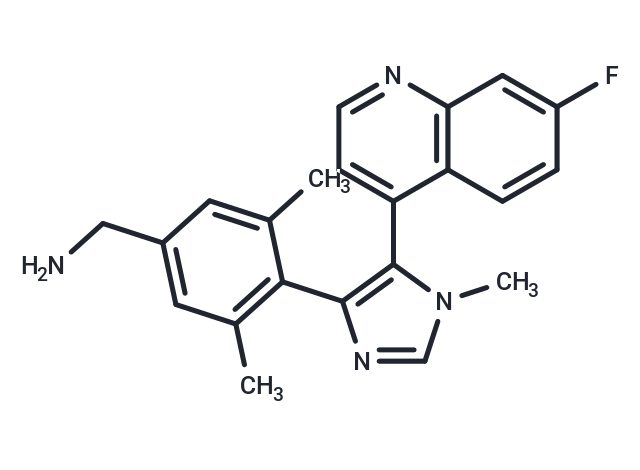Shopping Cart
- Remove All
 Your shopping cart is currently empty
Your shopping cart is currently empty

BI-9321 is a selective and cellular active nuclear receptor-binding SET domain 3 (NSD3)-PWWP1 domain antagonist (Kd: 166 nM). BI-9321 is inactive against NSD2-PWWP1 and NSD3-PWWP2.

| Pack Size | Price | Availability | Quantity |
|---|---|---|---|
| 25 mg | $2,100 | 6-8 weeks | |
| 50 mg | $2,730 | 6-8 weeks | |
| 100 mg | $4,350 | 6-8 weeks |
| Description | BI-9321 is a selective and cellular active nuclear receptor-binding SET domain 3 (NSD3)-PWWP1 domain antagonist (Kd: 166 nM). BI-9321 is inactive against NSD2-PWWP1 and NSD3-PWWP2. |
| Targets&IC50 | NSD3-PWWP1:(kd)166 nM |
| In vitro | BI-9321 specifically disrupts histone interactions of the NSD3-PWWP1 domain (IC50: 1.2 μM in U2OS cells). BI-9321 is targeting the methyl-lysine binding site of the PWWP1 domain and cellular target engagement at 1?μM. BI-9321 downregulates Myc messenger RNA expression and reduces proliferation in MOLM-13 cells. |
| Molecular Weight | 360.43 |
| Formula | C22H21FN4 |
| Cas No. | 2387510-86-1 |
| Relative Density. | 1.24 g/cm3 (Predicted) |
| Storage | Powder: -20°C for 3 years | In solvent: -80°C for 1 year | Shipping with blue ice. |

Copyright © 2015-2025 TargetMol Chemicals Inc. All Rights Reserved.